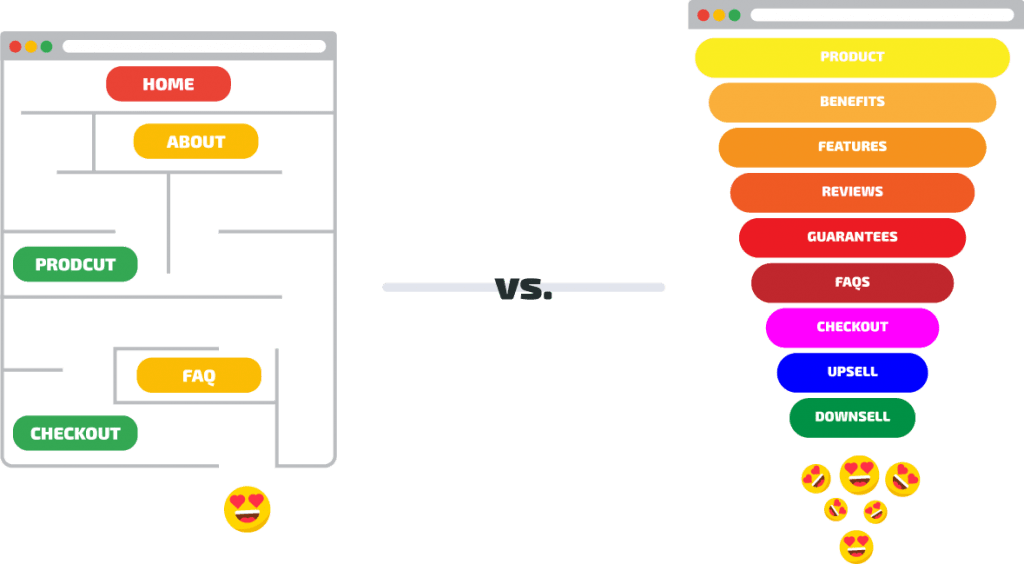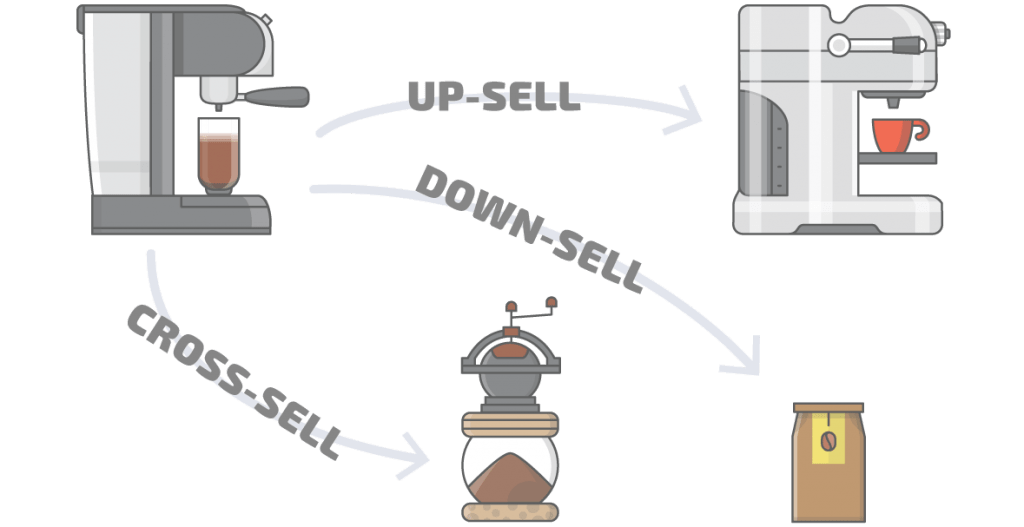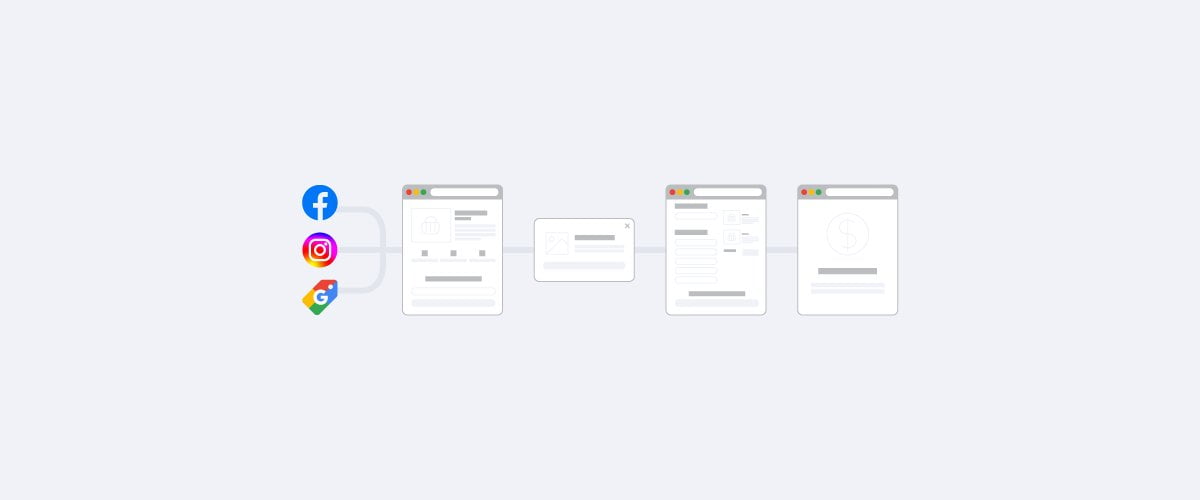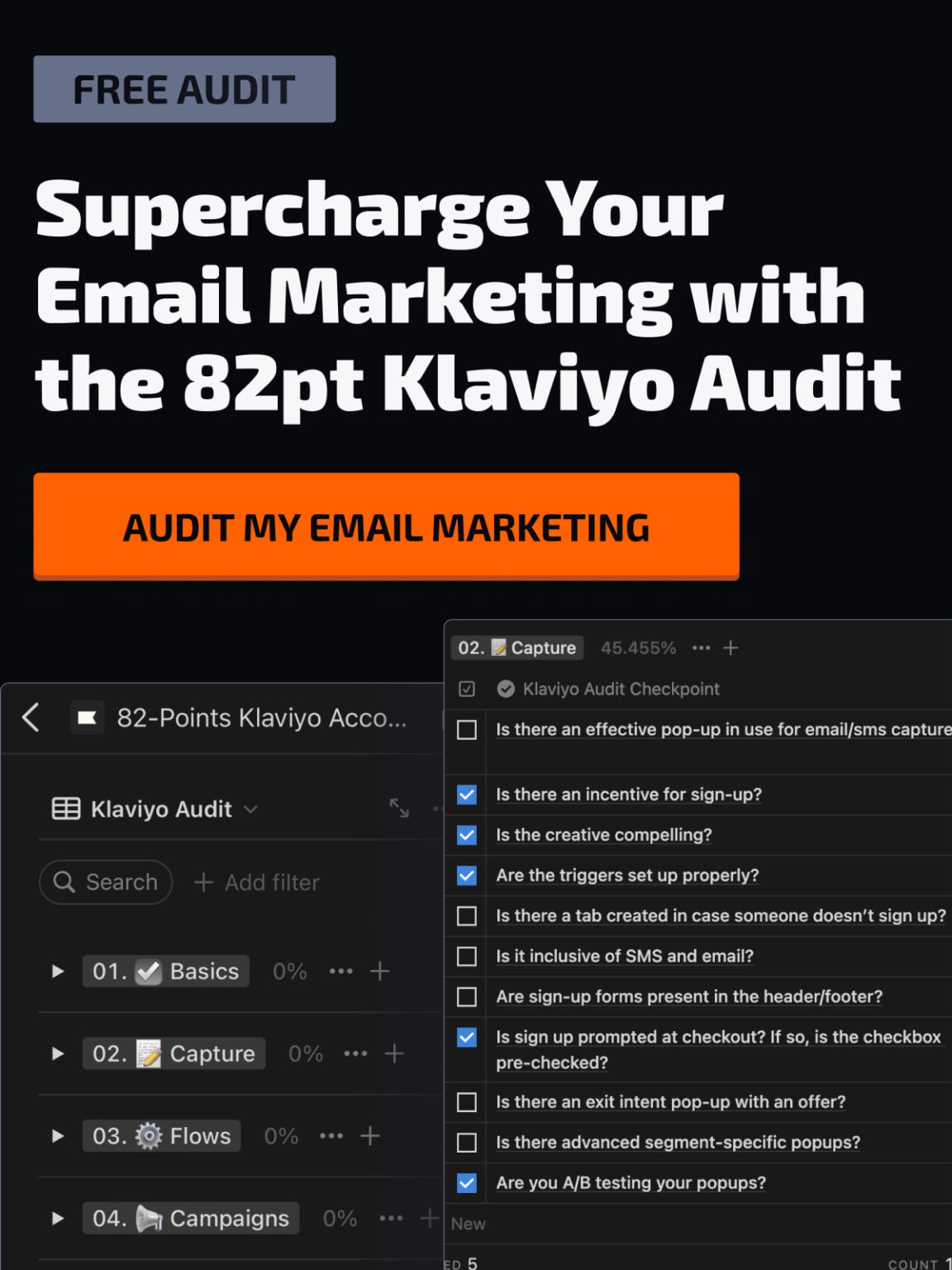Your Ecommerce is One Self-Liquidating Offer Away from Unlocking Massive Growth!
Are you an ecommerce brand grappling with stagnant sales or thin profit margins? You’re not alone. The good news? Ecommerce Self-Liquidating Offers (SLOs) can be your game-changer.
This guide will delve into the mechanics, benefits, and actionable steps to create an effective SLO tailored for ecommerce brands.
The Transformative Power of Ecommerce Self-Liquidating Offers
Every step of the funnel is designed to guide your customers to the next step or action. A funnel’s goal is to guide prospects to a specific action, and by breaking down the buyer’s journey into smaller steps, you have greater control over presenting offers to your consumers.
Unfortunately, funnels are usually designed to convert people after they complete all necessary steps, taking days – if not weeks – to convert. Such a negative cash flow model makes it hard to be profitable.
A simple solution to this is to splinter your core offer into a small commitment that will give you some cash to offset your ad spend. Consequently, it will allow you to invest more upfront and grow faster. This is called a Self-Liquidating Offer.
Today, we will discuss self-liquidating offers – a growth-hacking sales funnel designed for ecommerce businesses. Before we get to the meat and bones of this strategy, let’s begin with some background information on Funnels.

Why Self-Liquidating Offer Funnels Over Websites? The Ecommerce Perspective
In the ecommerce landscape, websites serve as a repository of information, while funnels are action-oriented pathways designed to guide customers toward a specific outcome.
Think of your website as a mountain and a funnel as a hiking trail. Sales funnels eliminate distractions, allow for easy optimization, and enable you to direct customers based on past behaviors.
Self Liquidating Offers allow you to guide prospects from one page to the next by narrowing their action choices to just one. At each stage of the funnel, you can guide your customers and influence their desire to continue to the next page, and so on. Furthermore:
-
- It eliminates distractions for your customers by limiting action options.
- You can monitor how effective each step in the funnel is.
- It allows for easy optimization based on bottlenecks.
- You can keep track of sales and conversion data.
- You can direct customers to specific sales paths based on past actions/behaviors.

PosterFactory: A Real Ecommerce Self-Liquidating Offer Case Study
By implementing Self-Liquidating Offers, we’ve seen a reduction of 50% in CPA, allowing for more aggressive growth.
Self-Liquidating Offer Funnels: A Solution to The Cash Flow Dilemma in Traditional Funnels
Traditional funnels often require a long time to convert, leading to negative cash flow. The solution? Self-Liquidating Offers. By splintering your core offer into a smaller, more manageable commitment, you can offset your ad spend and invest more upfront, accelerating growth.
The Anatomy of an Ecommerce Self-Liquidating Offer
A Self-Liquidating Offer aims to be profitable right from the start. It involves promoting a low-ticket, high-appeal product that covers your advertising costs, providing you with neutral or even positive cash flow.
This offer should provide an extreme amount of value to your customers for a small price tag.
How to Choose the Right Product for Your Ecommerce Self-Liquidating Offer (SLO).
Selecting the right product is crucial. It should offer extreme value at a small price tag, ideally retailing around $15 to $40. This product should closely relate to your brand’s core offer to ensure future upsells and cross-sells.
You may choose to promote this offer organically or to pay for some ads, such as Facebook Ads or Google Shopping Ads. The goal is for the revenue generated by the Self-Liquidating Offer (SLO) to cover the advertising cost. This provides you with neutral or even positive cash flow.
In other words, it’s a way to generate customers for free!
While “break-even” isn’t always the most inspiring term to hear when you’re hoping to maximize growth and profit, it’s really a great strategy because you are able to acquire leads at basically no cost. Any money you make from these leads in the future is 100% profit.
Breaking even is not exciting. Getting a new customer for free is!

The Mechanics of High-Converting Ecommerce Self-Liquidating Offers
Self-liquidating offers allow customers to get their feet wet without a big commitment. They give your brand the opportunity to conquer them in the long run. These offers also allow you to maximize your upfront profit for first-time consumers.
First, you promote a splintered offer which is self-liquidating. Then, pick a product that has a high market appeal and a low price point – that is related to your ecommerce brand’s core offer. Lastly, add up-sells, down-sells, and/or cross-sells to increase profit further.
Up-sells, Down-sells, and Cross-sells: Maximizing Ecommerce Profit
Don’t know what they are? We break them down for you:
Up-sells
This is when you sell a better, more advanced (and more expensive) product to your customer rather than the one they initially intended to purchase.
Down-sells
When the customer backs away from completing their purchase, try offering something of lesser value. You offer them a cheaper product because there is a higher chance of them accepting it. Remember, you might not make as much profit, but the main goal is acquiring a customer.
Cross-sells
This involves offering other products or services to the customer in addition to the one they purchased. They might be related or complementary goods. Use this technique to increase profits, as well as to solidify the relationship with the customer.

For example, you choose a coffee maker as your self-liquidating offer. To induce FOMO (fear of missing out), you offer the coffee maker for $29 instead of its retail price ($40), but only for a limited time.
When a customer places it in their cart, you ask if they want the better, stainless steel version for an additional $25 – this is up-selling. Once they’ve reached the checkout, you offer them the chance to add high-end coffee filters for $10 or a monthly subscription for $5/mo – cross-sell.
If they refuse, it’s time to down-sell, so you ask if they want to add regular filters for $7 or $3/mo.
The key point here is that rather than doing advertising for everything in your store, you advertise the cheaper coffee maker and then offer different things to increase the order value.
By adding this strategy, we usually see a 50% increase in AOV (average order value).
Which allows you to spend more to acquire a customer. Remember marketing rule #1:
“Whoever is willing to spend the most to acquire a customer, wins!”
Dan Kennedy
Through up-sells and cross-sells, you increase your average order value from $29 – the cost of one coffee machine in this example – to around $45. This gives you more money to invest in advertising and, therefore, grow faster.
Building a Bridge: From Self-Liquidating Offers to Long-Term Customer Relationships
Even if you break even on the Self-Liquidating Offer, the customer you gain is inclined to buy more in the future. The key is to continue engaging them through email marketing and other promotions, turning them into long-term, profitable customers.
Remember the importance of not leaving your bridges half-built?
Everything you sell afterwards, through retention, email marketing and promotions, is all profit. And profit means that you can continue to grow your business by reinvesting it in more advertising.
For this reason, it’s important that you don’t simply put the Self-Liquidating Offer in place and move on once you break even. Even if you break even on the Self-Liquidating Funnel, you’ll gain a customer inclined to buy more.
The Benefits of Ecommerce Self-Liquidating Offers
We recommend that all eCommerce stores use Self-Liquidating Offers. If you’ve got an online store and you’re not already doing it, you could be missing out on profit and customers.
If you effectively use Self-Liquidating Funnels, there are a number of benefits. These include:
- Offsetting your advertising costs.
- No customer acquisition costs.
- Gain customers likely to buy more.
- The ability to grow faster than your competitors.
Remember that, when done right, it’s essentially a free lead generation machine!
When you present the right offer to the right audience, it becomes an unstoppable source of free customers.
Ready to Take Your Ecommerce Brand to the Next Level with Self-Liquidating Offers?
Schedule a call to discuss how we could help you effectively implement Self-Liquidating Offers in your ecommerce.
At Harpia, we are dedicated to helping ecommerce businesses skyrocket through email marketing and advertising strategies.
Better yet, we can help you with ecommerce self-liquidating offers and ensure you’re not missing out on major growth and profit opportunities!



